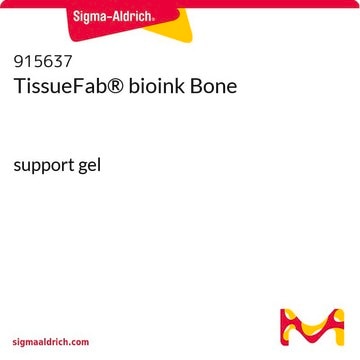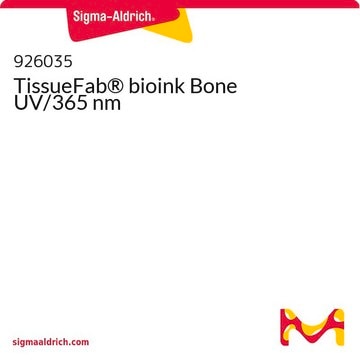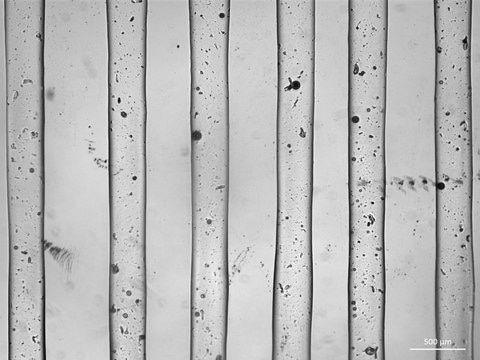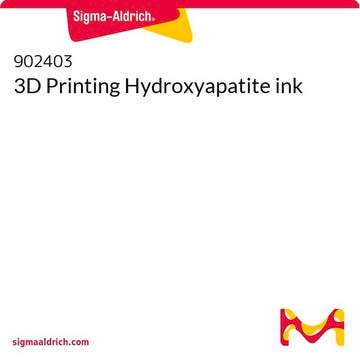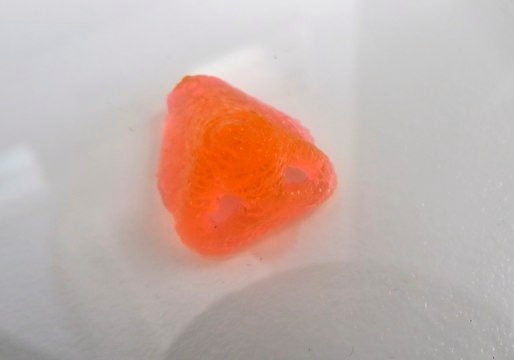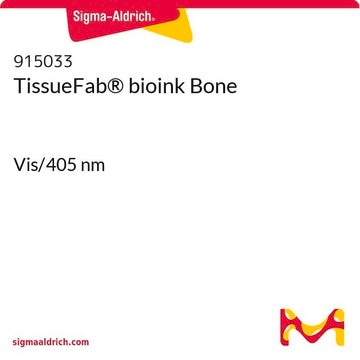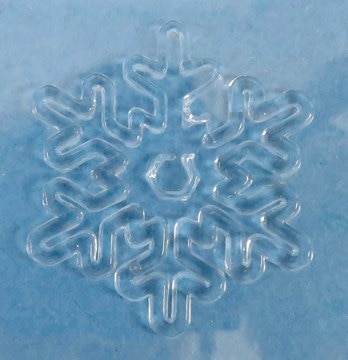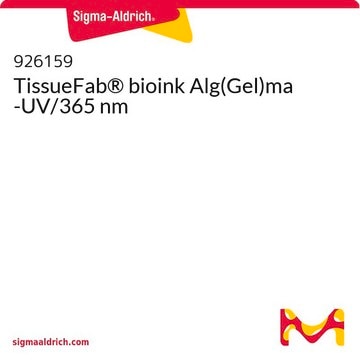915025
TissueFab® bioink Bone
UV/365 nm
Synonym(s):
3D Bioprinting, Bioink, GelMA, TissueFab
Sign Into View Organizational & Contract Pricing
All Photos(1)
About This Item
UNSPSC Code:
12352201
NACRES:
NA.23
Recommended Products
description
0.2 μm sterile filtered
suitable for 3D bioprinting applications
Quality Level
form
gel form (viscous)
impurities
≤5 CFU/g Bioburden (Fungal)
≤5 CFU/g Bioburden (Total Aerobic)
color
white
pH
6.5-7.5
application(s)
3D bioprinting
storage temp.
2-8°C
Looking for similar products? Visit Product Comparison Guide
Related Categories
Application
TissueFab®- GelMA-Bone-UV bioink is designed for promoting osteogenic differentiation of stem cells. It is based on Gelatin methacryloyl (GelMA) - Hydroxyapatite (HAp) hydrogel system. HAp is a highly crystalline form of calcium phosphate. HAp has a chemical similarity with the mineralized phase of bone which accounts for their excellent biocompatibility and osteoinductive and osteoconductive properties favorable for bone regeneration. HAp-containing hydrogels has been studied in literature to demonstrate their processability with different additive manufacturing approaches. Printing of cell laden structures with HAp containing bioink formulations have shown superior osteogenic properties.
Legal Information
TISSUEFAB is a registered trademark of Merck KGaA, Darmstadt, Germany
wgk_germany
WGK 3
Certificates of Analysis (COA)
Search for Certificates of Analysis (COA) by entering the products Lot/Batch Number. Lot and Batch Numbers can be found on a product’s label following the words ‘Lot’ or ‘Batch’.
Already Own This Product?
Find documentation for the products that you have recently purchased in the Document Library.
Tunable hydrogel composite with two-step processing in combination with innovative hardware upgrade for cell-based threedimensional bioprinting
Wust S, et al.
Acta Biomaterialia, 10, 630?40-630?40 (2014)
Tunable hydrogel composite with two-step processing in combination with innovative hardware upgrade for cell-based threedimensional bioprinting.
Wust S. et al.
Acta Biomaterialia, 10, 630-640 (2014)
Nano hydroxyapatite particles promote osteogenesis in a three-dimensional bio-printing construct consisting of alginate/gelatin/hASCs
Wang X F et al.
Royal Society of Chemistry Advances, 6, 6832-6842 (2016)
Mehdi Sadat-Shojai et al.
Materials science & engineering. C, Materials for biological applications, 49, 835-843 (2015-02-18)
The ability to encapsulate cells in three-dimensional (3D) protein-based hydrogels is potentially of benefit for tissue engineering and regenerative medicine. However, as a result of their poor mechanical strength, protein-based hydrogels have traditionally been considered for soft tissue engineering only.
Yicong Zuo et al.
ACS applied materials & interfaces, 7(19), 10386-10394 (2015-05-01)
Modular tissue engineering holds great potential in regenerating natural complex tissues by engineering three-dimensional modular scaffolds with predefined geometry and biological characters. In modular tissue-like construction, a scaffold with an appropriate mechanical rigidity for assembling fabrication and high biocompatibility for
Our team of scientists has experience in all areas of research including Life Science, Material Science, Chemical Synthesis, Chromatography, Analytical and many others.
Contact Technical Service
